The bridge over River Kwai is one of attractions in Kanchanaburi most visited by tourists. It became internationally famous thanks to cinema, with the movie "The Bridge on the River Kwai", and several books, such as the novel "The Narrow Road to the Deep North" by Richard Flanagan. The black iron railway bridge, still in use today, it was originally part of the tragically known Death Railway. The Death Railway, 415 Km long, was built on the orders of Japanese Empire to support its forces in the campaign in Burma, during the Second World War. The railway line linking Ban Pong, Thailand, to Thanbyuzayat, Burma, and was the completion of connection between Bangkok and Rangoon, now Yangon. For its construction were used 60,000 Allied prisoners of war, POWs, and at least 180,000 forced labourers of Asian origin, called Romusha. According to estimates, of them died of starvation and immense effort least 90,000 Romusha and 12,621 POWs, a figure established. The list of POWs died included: 6,904 British, 2,802 Australians, 2782 Dutch, and 133 Americans. The remains of the prisoners of war died are preserved in two war cemeteries in Kanchanaburi, the Don-Rak War Cemetery and the Chonk-Kai War Cemetery. The Don-Rak War Cemetery, also known as the Kanchanaburi War Cemetery, is located opposite the railway station, on Saengchote Road. The Chonk-Kai War Cemetery is located about 2 km south of the city, on the bank of the River Kwai Noi. After the war, the line was closed in 1947. Later the line was removed, and sold its iron rails, because of its danger and also because judged politically and morally undesirable. The section between Nong Pla Duk and Namtok was reopened ten years later, in 1957. It also includes the bridge over the River Kwai. The original black iron bridge was brought by the Japanese from the island of Java. Target of frequent Allied bombings during the Second World War has been restored. The curved spans of the bridge are still the original. The trains every day continue to follow the historical path of the Death Railway, in the stretch between Kanchanaburi Railway Station and the station in Nam Tok, passing right by the bridge over the River Kwai.
What to Expect - There are several day tours available to visit the Bridge on the River Kwai and the Death Railway from Bangkok. Some trips offer a full day in Kanchanaburi dedicated to the visit of the Bridge, the War Cemeteries and the infamous Railway; others trips associate the visit to Damnoen Saduak Floating Market, early in the morning, and then the visit to Kanchanaburi in the afternoon. Full Day tour to the Bridge on the River Kwai and the Death Railway costs between 1,800 and 2,400 THB, depending on the tour operator, and usually includes: the round trip by coach from your hotel in Bangkok until Kanchanaburi, the visits to the Bridge, the Allied War Cemeteries and the Jeath War Museum, an exhilarating long tailed boat ride along the River Kwai, the lunch in a Thai restaurant, and then hop aboard the ‘Death Railway’ for a exciting and scenic train ride. Departure is usually early in the morning, between 6.30 and 7.00 am, return to your hotel in Bangkok is in the late evening. Combined trip to the Damnoen Saduak Floating Market and Kanchanaburi normally costs less, between 1,200 and 1,600 THB, because usually it does not include the boat and train rides. It includes the round trip by minibus from your hotel to the Floating Market, with departure at 6.00-06.30 am, paddleboat ride along the market, free time to stroll around the market, transfer to River Kwai, lunch in a Thai restaurant close to the bridge, and then the visits to the Bridge, the Allied War Cemeteries and the Jeath War Museum. After the tour the minibus will return you to Khao San Road, around 6:30 pm.Read More
River Kwai & Death Railway Day Tour
29540,48782,73809,29540,48782,73809



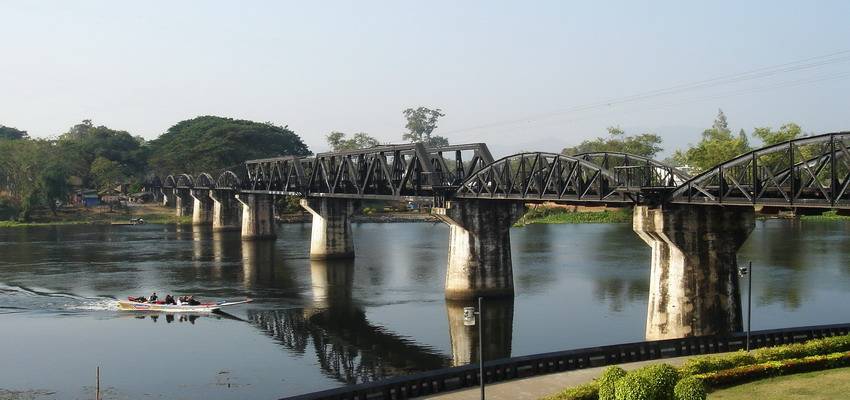






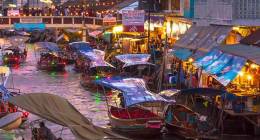


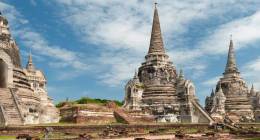



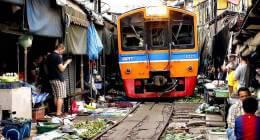
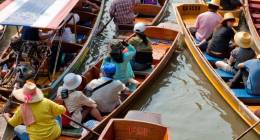


Reviews of River Kwai & Death Railway Day Tour ()
Leave Your Opinion Out of concern for your satisfaction and in order to fulfill your expectations, we have created a place for your opinions.